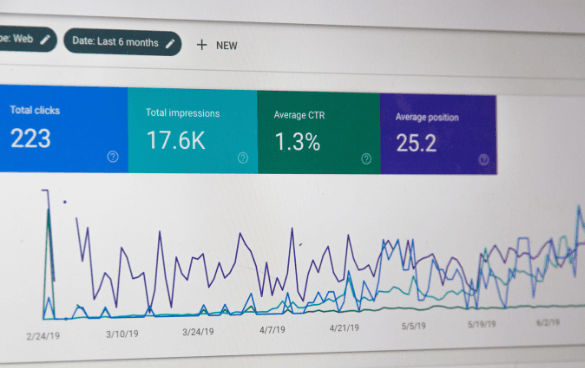Trick Attributes of Remarketing In Google Analytics Explained
Trick Attributes of Remarketing In Google Analytics Explained
Blog Article
Using Remarketing in Google Analytics: A Comprehensive Guide
Using remarketing in Google Analytics supplies organizations a calculated edge in reaching out to possible clients. This overview will shed light on the essential actions included in utilizing the full possibility of remarketing in Google Analytics, leading to boosted advertising results.
Understanding Remarketing in Google Analytics
Remarketing in Google Analytics allows organizations to tactically target users that have actually previously interacted with their internet site or mobile app. By leveraging data from Google Analytics, organizations can produce tailored remarketing checklists based on user actions, such as pages seen, actions taken, or specific goals achieved. This effective device allows companies to re-engage with customers who have actually shown passion in their services or items, eventually raising the possibility of conversion.
Understanding the various kinds of remarketing methods is critical for a successful project - What Is “Remarketing” In Google Analytics?. Google Analytics uses different alternatives, including typical remarketing, dynamic remarketing, and remarketing checklists for search ads (RLSA) Each type offers a special purpose and can be tailored to fulfill specific advertising purposes
Moreover, evaluating the performance of remarketing projects is necessary for enhancing outcomes. Google Analytics provides important insights right into the efficiency of various remarketing approaches, allowing businesses to make data-driven decisions and fine-tune their targeting technique. By continually monitoring and adjusting remarketing efforts based on analytics information, businesses can make best use of ROI and drive success in their marketing initiatives.
Establishing Up Remarketing Projects

After establishing audience lists, the following step is to link Google Analytics with Google Advertisements. By linking these two systems, companies can seamlessly move audience lists from Google Analytics to Google Advertisements for remarketing functions. This integration permits more precise targeting and much better campaign efficiency.
When the accounts are connected, services can create remarketing projects in Google Advertisements utilizing the audience provides previously specified in Google Analytics. These campaigns can be customized with particular advertisement creatives, messaging, and bidding methods to efficiently re-engage with previous visitors and drive conversions. By adhering to these steps, organizations can leverage the power of remarketing to boost their advertising initiatives and enhance ROI.
Making Use Of Audience Segmentation Strategies

Predefined sections in Google Analytics allow you to promptly evaluate typical target market categories fresh individuals, returning customers, or users who completed a certain objective on your website. Customized sectors, on the various other hand, allow you to develop unique segments based on certain standards that are essential to your business objectives. Dynamic remarketing listings immediately change based upon individual habits, revealing tailored advertisements to users who have engaged with your website in specific means.
Studying Remarketing Efficiency Metrics
Upon assessing the effectiveness of remarketing projects in Google Analytics, the analysis of crucial efficiency metrics offers beneficial insights right into audience interaction and conversion rates. By diving right into metrics such as click-through rates (CTR), conversion prices, cost per purchase (CERTIFIED PUBLIC ACCOUNTANT), and return on ad spend (ROAS), online marketers can determine the success of their remarketing efforts. Examining these metrics enables marketing professionals to maximize campaigns, improve target market targeting, and allocate spending plans effectively to improve total remarketing performance.
Optimizing Remarketing Methods
When refining remarketing strategies in Google Analytics, focusing on audience division is extremely important for accomplishing project success. By separating your audience into particular sections based upon their behavior, demographics, or rate of interests, you can customize your advertisements better to every group. This targeted technique raises the likelihood of involving users who have already shown rate of interest in your solutions or items, bring about greater conversion prices.
An additional crucial element of enhancing remarketing strategies is constantly screening and refining your projects (What Is “Remarketing” In Google Analytics?). A/B screening different advertisement creatives, messaging, or deals can help you identify what resonates finest with your audience and drives the most conversions. By examining the efficiency of these tests in Google Analytics, you can make data-driven decisions to optimize your remarketing efforts further
In addition, leveraging dynamic remarketing can considerably improve your campaign results. This feature permits you to reveal tailored advertisements to individuals based upon their important source previous communications with your site, showcasing products or services they have previously checked out. By supplying customized content to customers based upon their rate of interests and habits, vibrant remarketing can assist boost interaction and drive conversions.
Conclusion
To conclude, taking advantage of remarketing in Google Analytics is a calculated approach to target customers that have formerly engaged with a website. By developing personalized audience checklists and using target market segmentation methods, services can optimize remarketing advocate enhanced conversion prices. Evaluating efficiency metrics and constantly maximizing methods are crucial for maximizing the performance of remarketing efforts.
Google Analytics uses various choices, consisting of conventional remarketing, vibrant remarketing, and my site remarketing lists for search ads (RLSA)After establishing up audience listings, the following step is to link Google Analytics with Google Advertisements. By linking these two systems, companies can flawlessly transfer target market lists from Google Analytics to Google Ads for remarketing functions.Once the accounts are linked, companies can create remarketing projects in Google Ads making use of the target market notes formerly defined in Google Analytics.When refining remarketing techniques in Google Analytics, concentrating on audience segmentation is vital for achieving campaign success.
Report this page